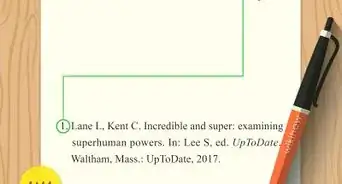This article was co-authored by wikiHow staff writer, Jennifer Mueller, JD. Jennifer Mueller is a wikiHow Content Creator. She specializes in reviewing, fact-checking, and evaluating wikiHow's content to ensure thoroughness and accuracy. Jennifer holds a JD from Indiana University Maurer School of Law in 2006.
This article has been viewed 47,352 times.
Learn more...
When writing a research paper, you may want to use the Declaration of Independence as a reference – especially if you're writing a paper for history or political science. While you do have to provide some sort of citation information, you typically don't need the same depth of publication information since you're dealing with such a well-known document. Where and how you cite the Declaration of Independence depends on whether you're using Modern Language Association (MLA), American Psychological Association (APA), or Chicago citation style.
Steps
MLA
-
1Omit a Works Cited entry for the Declaration of Independence. Because the Declaration of Independence is a well-known work, MLA does not require a Works Cited entry. You only have to use an in-text citation.[1]
- If you are comparing drafts of the Declaration of Independence, on the other hand, you would include a Works Cited entry for each document you compared. In that case, you would use the format for an unpublished document or a manuscript.
Tip: If you used a particular version of the Declaration of Independence, such as one that had annotations or explanations for the text, your instructor or supervisor may want you to include a Works Cited entry to that particular version. Ask to make sure.
-
2Use the institutional author and year after your first mention. Even though technically Thomas Jefferson wrote the Declaration of Independence, MLA style considers the United States to be the author. In your first mention of the Declaration in your paper, use the abbreviation "US" along with the year the Declaration was published. Place this information in a parenthetical at the end of the first sentence in which you paraphrase or quote from the Declaration. Place the sentence's closing punctuation outside the closing parenthesis.[2]
- For example, you might write "The Declaration of Independence asserted that the British monarch was unfit to govern the American people (US 1776)."
Advertisement -
3Leave out the parenthetical citation for subsequent mentions. MLA style only requires a parenthetical citation the first time you quote or paraphrase the Declaration of Independence. If you continue to quote or paraphrase it later on in your paper, no citation is required at all. However, you want to make sure you're letting your readers know that you're quoting or paraphrasing from the Declaration.[3]
- Always enclose any quoted material in quotation marks and mention the name of the Declaration in any sentence where you quote or paraphrase from it.
APA
-
1List Thomas Jefferson as the author of the Declaration. In an APA reference list entry, the Declaration of Independence is treated as a government document with an individual author. Type Jefferson's last name first, followed by a comma, then his first initial.[4]
- Example: Jefferson, T.
-
2Provide the year of publication in parentheses. The Declaration is considered published the date it was signed. Although you may know that it was signed on July 4, 1776, only the year is required for an APA reference list entry. Place a period outside the closing parenthesis.[5]
- Example: Jefferson, T. (1776).
-
3Type the title in italics. After the year of publication, type the title. Unlike most APA titles, use title case, capitalizing every word except the word "of." The title is italicized because it is a stand-alone document. Place a period at the end of the title.[6]
- Example: Jefferson, T. (1776). The Declaration of Independence.
-
4Include a URL if you accessed the Declaration online. Rather than looking at an actual copy of the Declaration in a museum, it's likely that you looked it up online. Providing the URL allows your readers to look at the same thing you looked at. Type the words "Retrieved from" then copy the URL. Do not type a period at the end of the URL.[7]
- Example: Jefferson, T. (1776). The Declaration of Independence. Retrieved from https://etc.usf.edu/lit2go/133/historic-american-documents/4957/the-declaration-of-independence/
-
5Use an in-text parenthetical citation with the author's name and year. APA in-text citations follow author-date format, so your in-text citation would be "(Jefferson, 1776)." The parenthetical citation goes inside the sentence's closing punctuation.[8]
- For example, you might write: The US was founded on the principle that "all men are created equal" (Jefferson, 1776).
Tip: If you directly mention the Declaration of Independence in the same sentence, a parenthetical citation is likely not necessary. Ask your instructor or supervisor for clarification.
Chicago
-
1List Thomas Jefferson as the author of the Declaration. In your bibliographic entry, type Jefferson's last name first followed by a comma. Then type his first name. Place a period at the end of his first name.[9]
- Example: Jefferson, Thomas.
-
2Provide the title of the document in quotation marks. Type the title in title case. For this particular document, the only word you won't capitalize is the word "of." Place a period at the end of the title, inside the closing quotation marks.[10]
- Example: Jefferson, Thomas. "The Declaration of Independence."
-
3Add the year of publication and URL if necessary. After the title, type the year the Declaration was published. For this type of document, that is considered the year it was signed and enacted, 1776. If you accessed the Declaration online, adding a URL will help your readers find the exact document you looked at. Type a period after the year, then the words "Retrieved from" followed by the URL. Place a period at the end of the URL.[11]
- Example: Jefferson, Thomas. "The Declaration of Independence." 1776. Retrieved from https://etc.usf.edu/lit2go/133/historic-american-documents/4957/the-declaration-of-independence/.
-
4Write footnotes in sentence style. For footnotes, write the author's first name first, as you would if you were writing it in a sentence. Separate the elements of your citation with commas rather than periods. The only period should be at the end of the footnote. Put the date in parentheses after the title.[12]
- Example: Thomas Jefferson, "The Declaration of Independence," (1776), retrieved from https://etc.usf.edu/lit2go/133/historic-american-documents/4957/the-declaration-of-independence/.
Tip: For a document as well-known as the Declaration of Independence, your instructor or supervisor may not even care about extensive footnotes or a bibliographic entry. Ask for clarification.
References
- ↑ https://gbslibguides.glenbrook225.org/c.php?g=514373&p=3561474
- ↑ https://answers.library.georgetown.edu/research/faq/228505
- ↑ https://gbslibguides.glenbrook225.org/c.php?g=514373&p=3561474
- ↑ https://essaycues.com/how-to-cite-the-declaration-of-independence-the-constitution-and-the-bill-of-rights-in-mla-and-apa/
- ↑ https://essaycues.com/how-to-cite-the-declaration-of-independence-the-constitution-and-the-bill-of-rights-in-mla-and-apa/
- ↑ https://essaycues.com/how-to-cite-the-declaration-of-independence-the-constitution-and-the-bill-of-rights-in-mla-and-apa/
- ↑ https://essaycues.com/how-to-cite-the-declaration-of-independence-the-constitution-and-the-bill-of-rights-in-mla-and-apa/
- ↑ https://essaycues.com/how-to-cite-the-declaration-of-independence-the-constitution-and-the-bill-of-rights-in-mla-and-apa/
- ↑ https://owl.purdue.edu/owl/research_and_citation/chicago_manual_17th_edition/cmos_formatting_and_style_guide/legal_public_and_unpublished_materials.html
- ↑ https://owl.purdue.edu/owl/research_and_citation/chicago_manual_17th_edition/cmos_formatting_and_style_guide/legal_public_and_unpublished_materials.html
- ↑ https://owl.purdue.edu/owl/research_and_citation/chicago_manual_17th_edition/cmos_formatting_and_style_guide/legal_public_and_unpublished_materials.html
- ↑ https://owl.purdue.edu/owl/research_and_citation/chicago_manual_17th_edition/cmos_formatting_and_style_guide/legal_public_and_unpublished_materials.html
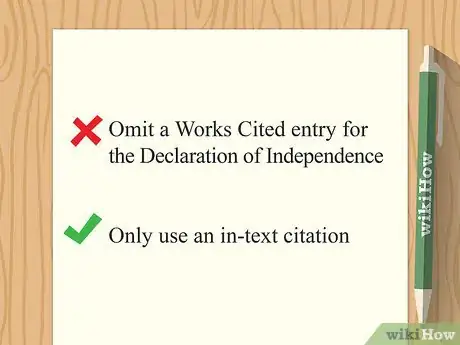
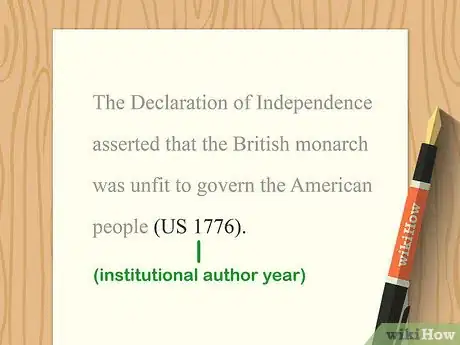
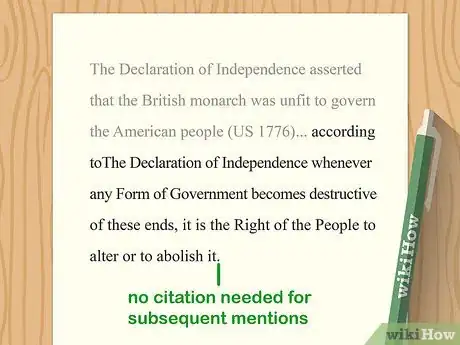
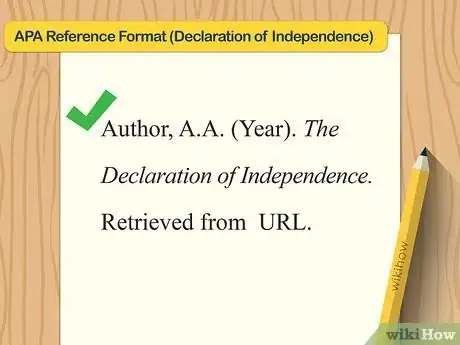
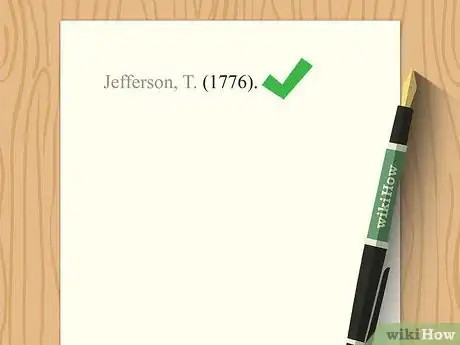
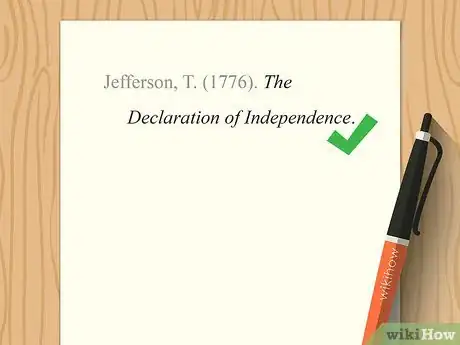
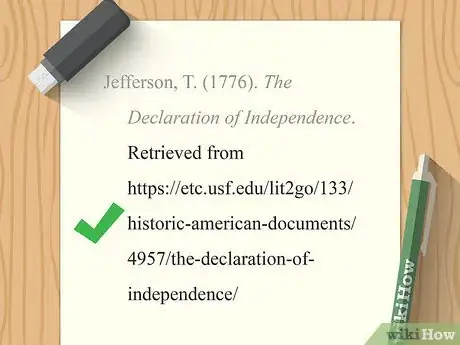
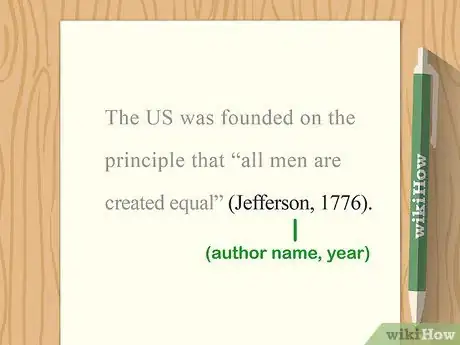
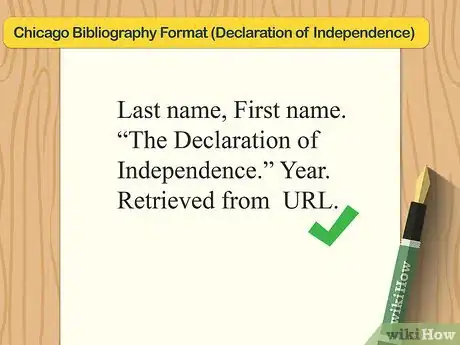
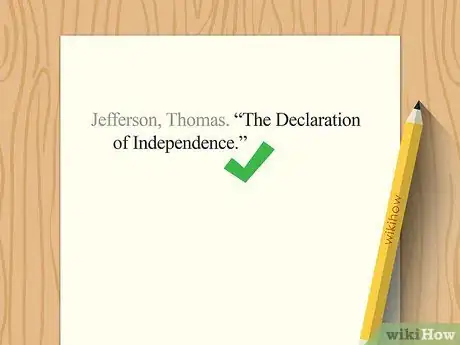
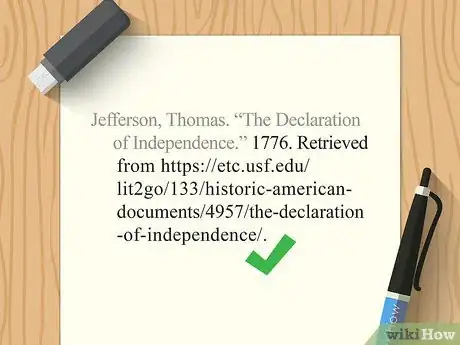

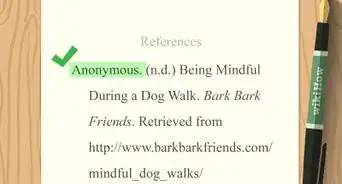



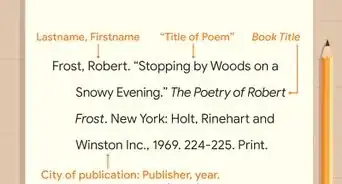
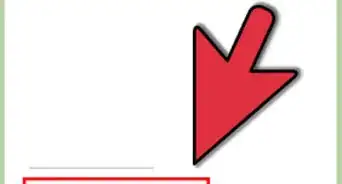




-Step-18.webp)


